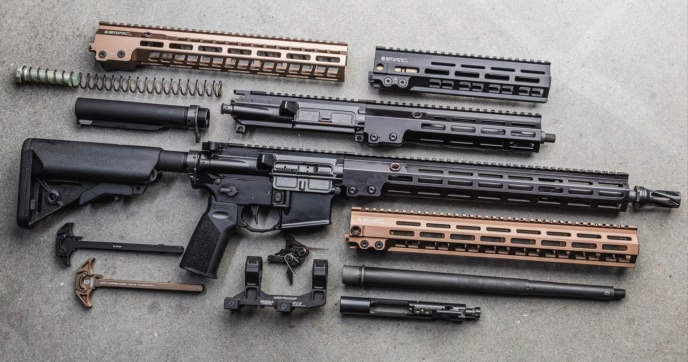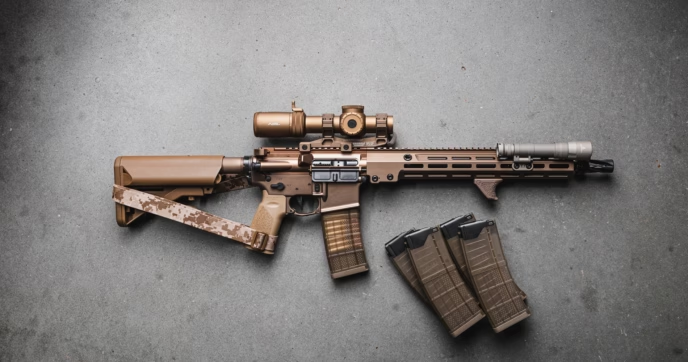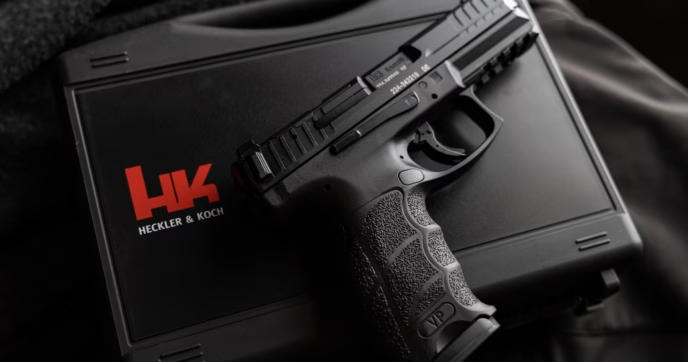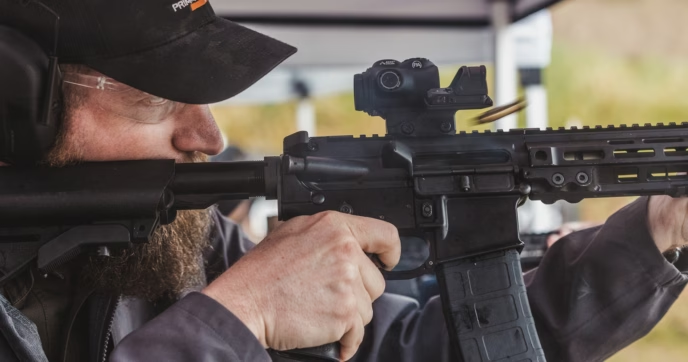Few firearm platforms are as widely recognized or as heavily modified as the GLOCK series of handguns. From duty carry to competitive use, the GLOCK has built its reputation on simplicity, reliability, and adaptability.
A component of that design is one that most owners rarely think about until something goes wrong: the recoil spring assembly. Though it may seem small compared to the slide, barrel, or trigger, the recoil spring is essential to the safe and reliable operation of the pistol. More than that, for enthusiasts who want to fine-tune performance, experimenting with different recoil springs and guide rods opens the door to greater control over recoil impulse, cycling speed, and compatibility with accessories such as compensators or suppressors.
This article will explore the function of GLOCK recoil springs, the different modification options available, how these changes impact performance, and how to recognize when a recoil spring needs attention.
By understanding the basics of recoil spring tuning and selection, GLOCK owners can make informed decisions about how best to equip their pistol, whether for concealed carry, duty use, or competitive shooting.
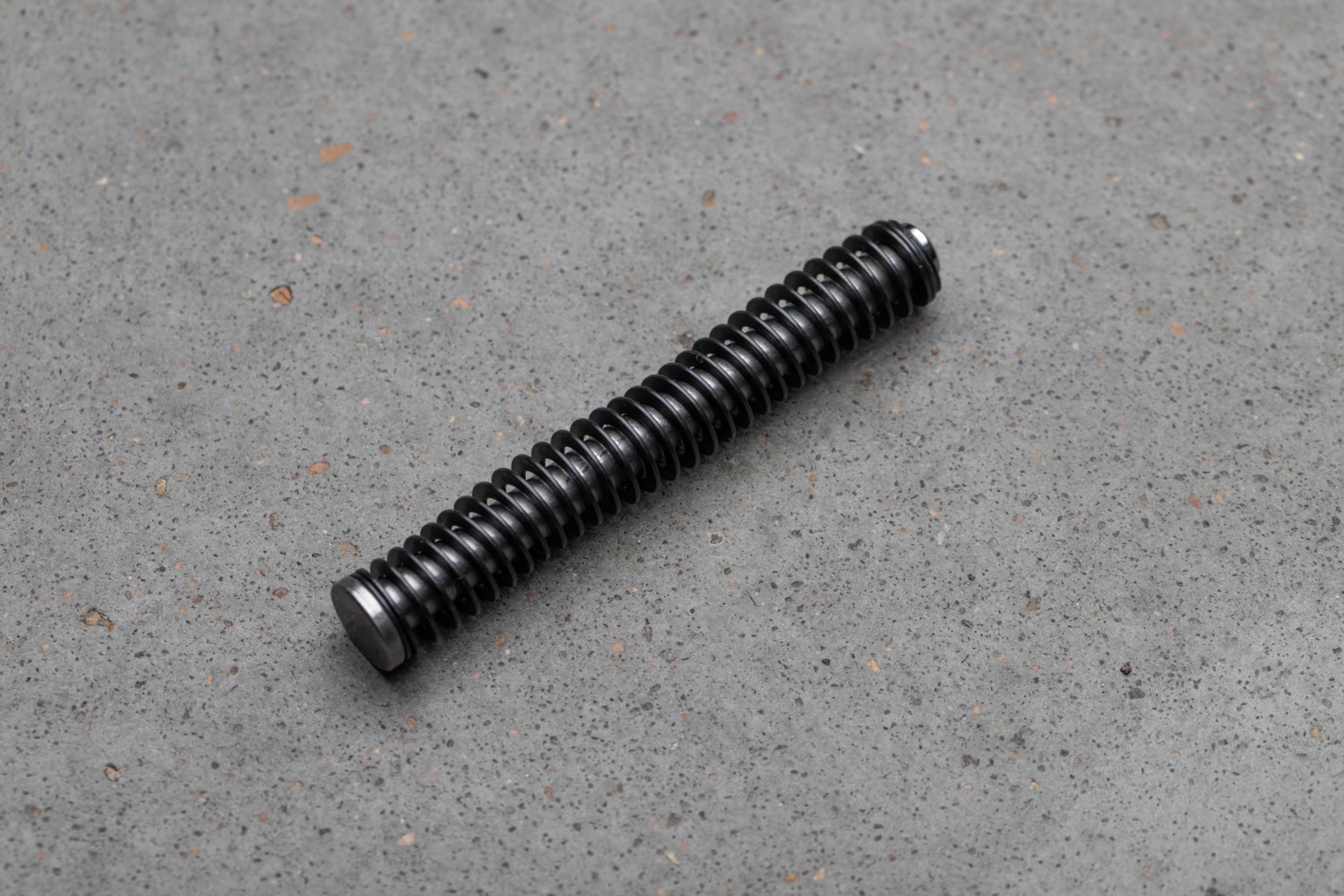
Understanding GLOCK Recoil Springs
To understand the importance of GLOCK recoil springs, it helps to look at their role in the operating cycle of the pistol. When a round is fired, expanding gases propel the bullet forward and push the slide rearward. The recoil spring absorbs and stores much of that energy, slowing the slide before guiding it back forward and into battery. This spring action not only reduces felt recoil but also ensures that the pistol reliably strips the next cartridge from the magazine, chambers it, and locks into position for the next shot.
An OEM GLOCK recoil spring assembly consists of a guide rod and one or more captive springs. The captive design keeps the spring compressed around the rod, making it easier to handle during disassembly and reassembly while also preventing the spring from becoming lost or damaged.
In earlier GLOCK generations—such as the Gen 1 through Gen 3 models—the recoil spring assembly used a single-spring system. By contrast, Gen 4 and Gen 5 GLOCK handguns feature a dual-spring, or nested-spring, assembly. This dual-spring system was designed to improve durability, soften felt recoil, and reduce wear on the pistol slide and frame, particularly in compact and subcompact models.
It is important to recognize that not all recoil spring assemblies are interchangeable across generations. For instance, a Gen 3 GLOCK 19 uses a different assembly from the Gen 4 GLOCK 19, and the guide rod dimensions are not directly compatible without the use of aftermarket adapters.
Similarly, not all recoil spring assemblies are compatible with all models. While the GLOCK 17, 34, and 17L all utilize the same recoil spring assembly, so long as they are all within the same generation, models 19, 26, and 17 all have different ones.
Therefore, when purchasing replacement or upgraded recoil springs, GLOCK owners must confirm that the part is designed for their specific generation and model.
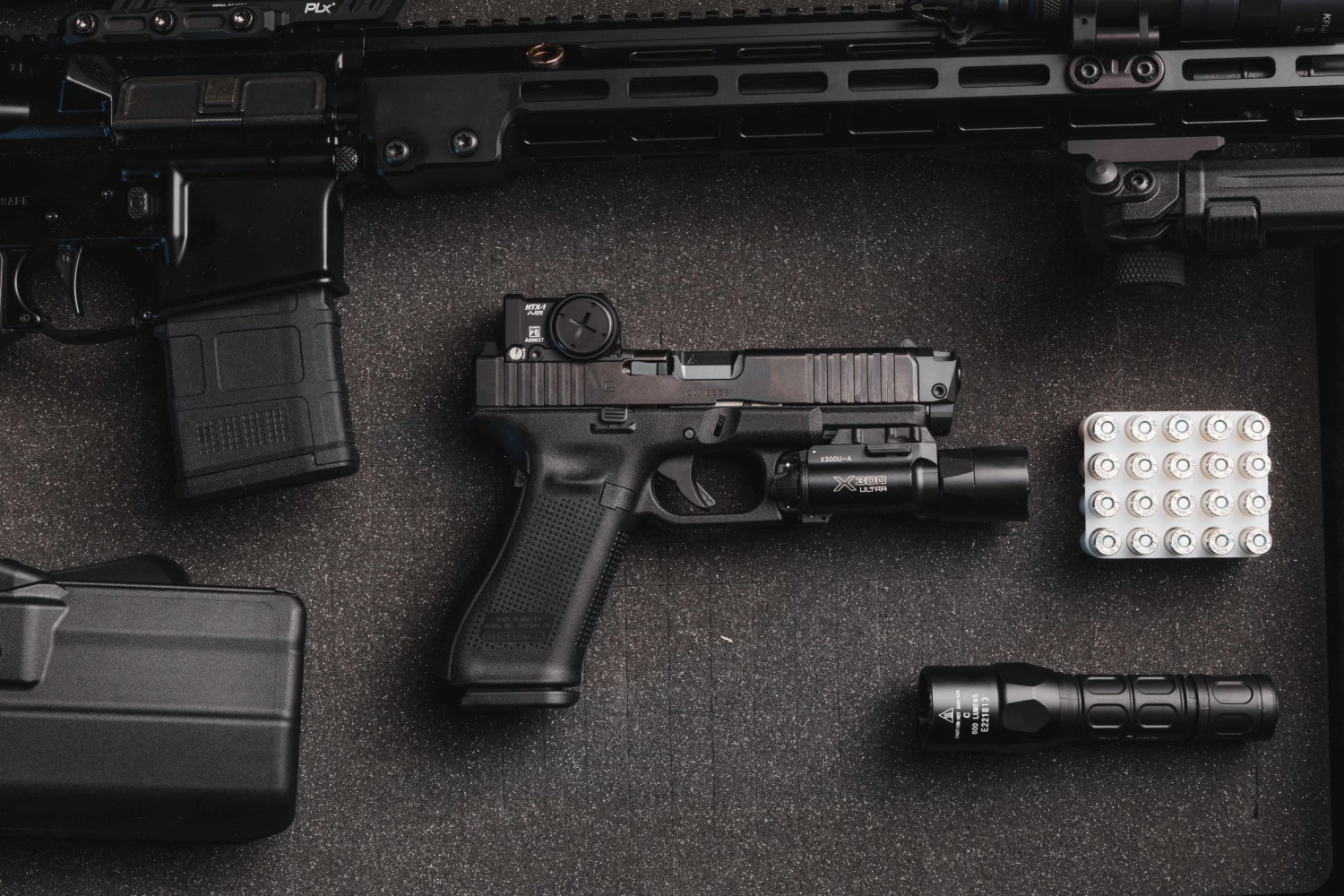
Modding Your GLOCK: Spring Weights
Once you understand the basics of how recoil springs function, the next step is learning how different spring weights affect performance, and how to use different weights to achieve your goals for your pistol.
Recoil springs are measured in pounds, reflecting the force required to compress them. GLOCK factory recoil spring weights vary depending on model and caliber, but they generally fall in the range of 15 to 18 pounds for 9mm pistols.
Lightweight recoil springs typically range from 11 to 14 pounds. By reducing resistance, a lighter spring allows the slide to cycle more quickly and with less perceived effort. This can help competitive shooters achieve faster split times, particularly when combined with compensators that redirect gas and reduce muzzle rise.
However, a spring that is too light can cause reliability issues, especially if used with standard-pressure defensive ammunition. The slide may cycle too quickly, failing to fully chamber the next round or causing failures to eject. Lightweight springs can also cause recoil to feel “snappier” as the slide moves rearward with greater force. At the same time, it will move forward with less force, which some users find makes it easier to reacquire their sight picture.
On the other end of the spectrum are heavy recoil springs, usually ranging from 19 to 24 pounds or more. These are often chosen by users who run suppressors or shoot hotter loads. A heavier spring resists rearward slide movement, slowing the cycle and absorbing more energy.
This can reduce wear on the GLOCK frame and slide and prevent excessive battering when shooting powerful loads. The tradeoff is that with lighter practice ammunition or low-pressure rounds, a heavy spring may cause malfunctions by preventing the slide from traveling fully rearward.
Heavy springs also cause the slide to return to battery with more force, which can make recoil feel more erratic, though often softer.
For most users, the standard GLOCK recoil spring weight is a carefully balanced option that ensures reliable function with the widest variety of ammunition. Those who modify their pistols for specific applications—such as competition or suppressed shooting—may benefit from experimenting with different weights, but such modifications should always be done thoughtfully and with reliability as the foremost priority.
Those who intend to carry their firearm in any kind of defensive capacity, whether personal or professional, should stick with stock recoil springs. The OEM GLOCK recoil spring was carefully selected by a team of engineers who know more about GLOCK pistols than anyone else in the world and provides reliable function with nearly any ammo and in nearly any conditions. When the consequences of failure can be dire, a modest improvement in performance simply isn’t worth the potential loss of reliability.
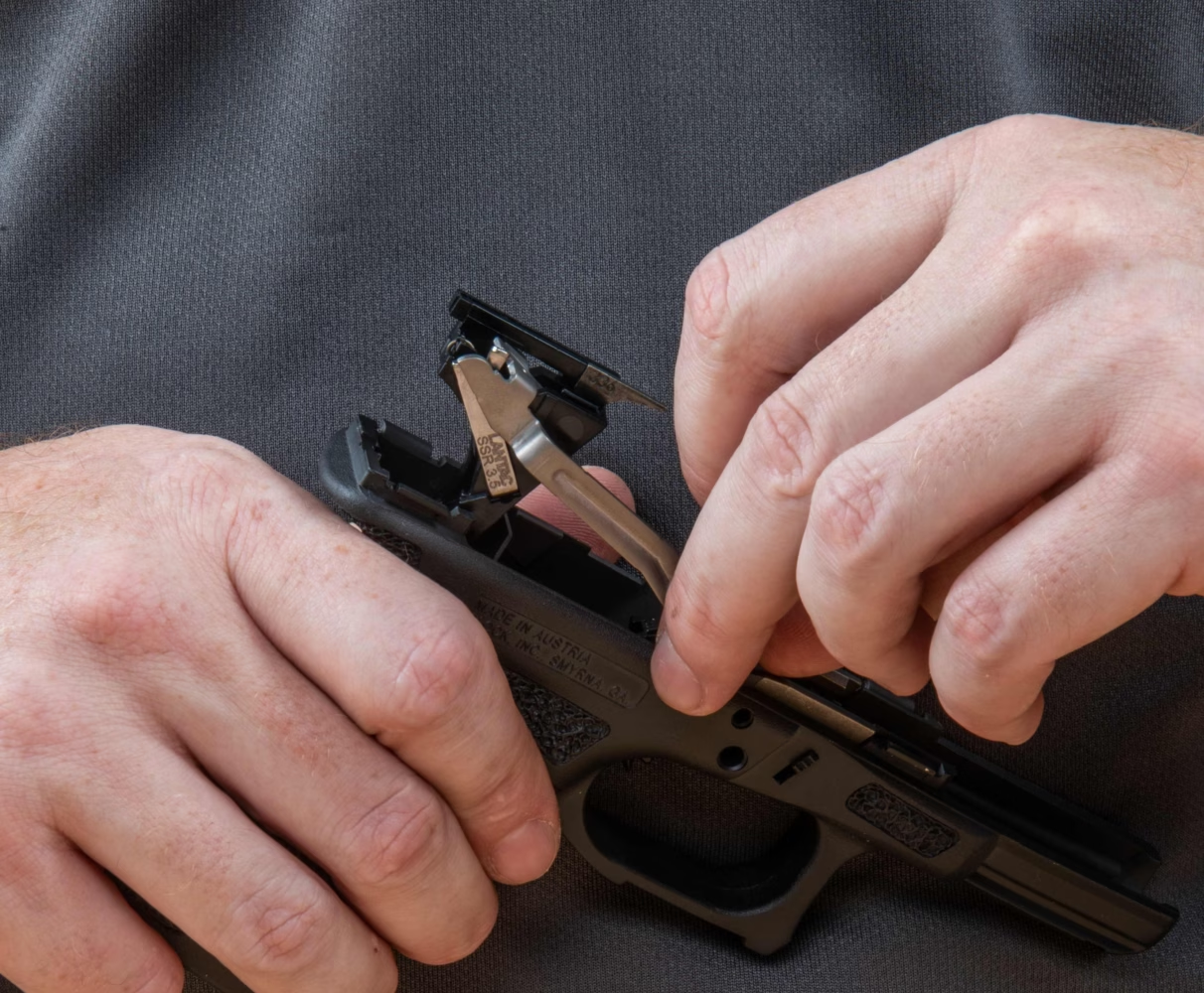
The Basics of Tuning
The recoil spring is one of the simplest yet most effective components to tune when customizing a GLOCK, nearly on par with a match-grade trigger, which we review in depth in our GLOCK trigger assembly guide.
By changing the spring weight, shooters can alter the cyclical speed and recoil impulse of the firearm. A lighter spring allows the slide to cycle faster, which can reduce felt recoil when paired with a compensator or ported barrel, as the system balances the energy of escaping gases with the spring’s resistance. This combination often results in softer recoil and quicker recovery between shots.
For competitive users, this tuning can make a dramatic difference. Faster cycling means less downtime between shots and a smoother recovery. However, the margin for error is smaller, as reliability may suffer if the spring is too light for the ammunition in use.
A heavier recoil spring can slow down the slide and provide more consistent reliability when using suppressors or ammunition with higher pressures. Suppressed pistols in particular benefit from heavier springs because the increased backpressure and weight from the suppressor change the timing of the operating cycle. Without a stronger spring, the slide may not have enough force to return to battery.
This may not be necessary in certain configurations, though. Very lightweight suppressors may only negligibly change the balance of the forces in the pistol, allowing reliable function with a stock spring. Similarly, pistols with fixed or non-tilting barrels are generally more tolerant of added weight and may not need any tuning.
A lighter or heavier spring may also be needed if you opt for an aftermarket slide, or even swap out your original one for a GLOCK MOS slide. A significantly lighter slide might require slightly lighter springs for proper balance, while a heavier one or one with an added optic might need a stronger spring.
In short, tuning with recoil springs is about balance. Too light or too heavy a spring can lead to malfunctions, while the right spring weight can harmonize with your chosen ammunition and accessories to create a more controllable and reliable system.
Before you can tune your pistol, though, you’ll need to know how to break it down. If you’re not familiar with the process, check out our article on how to field strip a GLOCK.
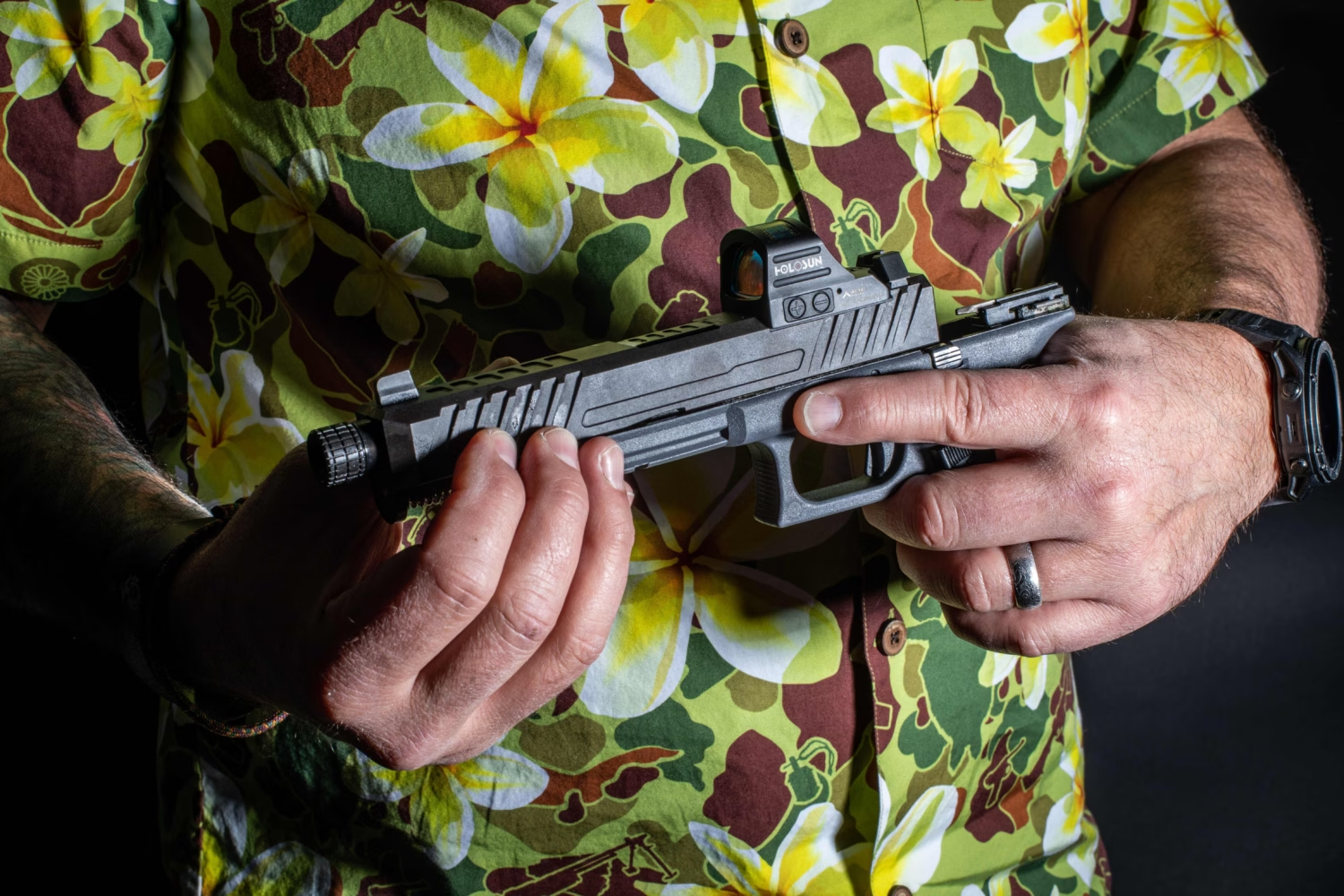
Troubleshooting Your Recoil Spring
Because recoil springs endure significant stress during every firing cycle, they are among the first components in a GLOCK to wear out. A worn or improperly weighted spring can lead to malfunctions that compromise reliability. Recognizing these symptoms is key to diagnosing and fixing spring-related problems.
One common issue is failure to feed, which occurs when the slide lacks sufficient energy to fully strip a round from the magazine and force it into the chamber. This can be the result of an excessively lightweight spring or a standard recoil spring that has worn out and no longer has enough strength to reliably operate the firearm. Users can identify this malfunction by the round being only partially stripped from the magazine, or by being fully stripped by not fully entering the chamber.
Another warning sign of a worn recoil spring is erratic ejection patterns. If brass is ejecting inconsistently—sometimes flying far to the side, sometimes barely clearing the ejection port—it may indicate that the spring no longer controls the slide’s motion effectively. Shooters may also notice unusual recoil impulse or a harsher feel during firing, suggesting that the spring is no longer absorbing energy as intended.
Replacing a worn recoil spring is one of the simplest and most cost-effective maintenance tasks a GLOCK owner can perform. GLOCK recommends replacing recoil spring assemblies approximately every 3,000 to 5,000 rounds, though this interval may vary depending on the caliber and intensity of use. If reliability issues begin to appear earlier, swapping in a fresh spring is often the quickest fix.
Other types of malfunctions include a failure to eject or “stovepipe” malfunction, which can occur when the slide returns to battery too quickly and catches the brass before it has had a chance to fully eject. This can be caused by a number of factors, but one of them is a too-heavy spring. An excessively heavy spring can also cause a failure to feed if it prevents the slide from moving fully to the rear during its reciprocation.
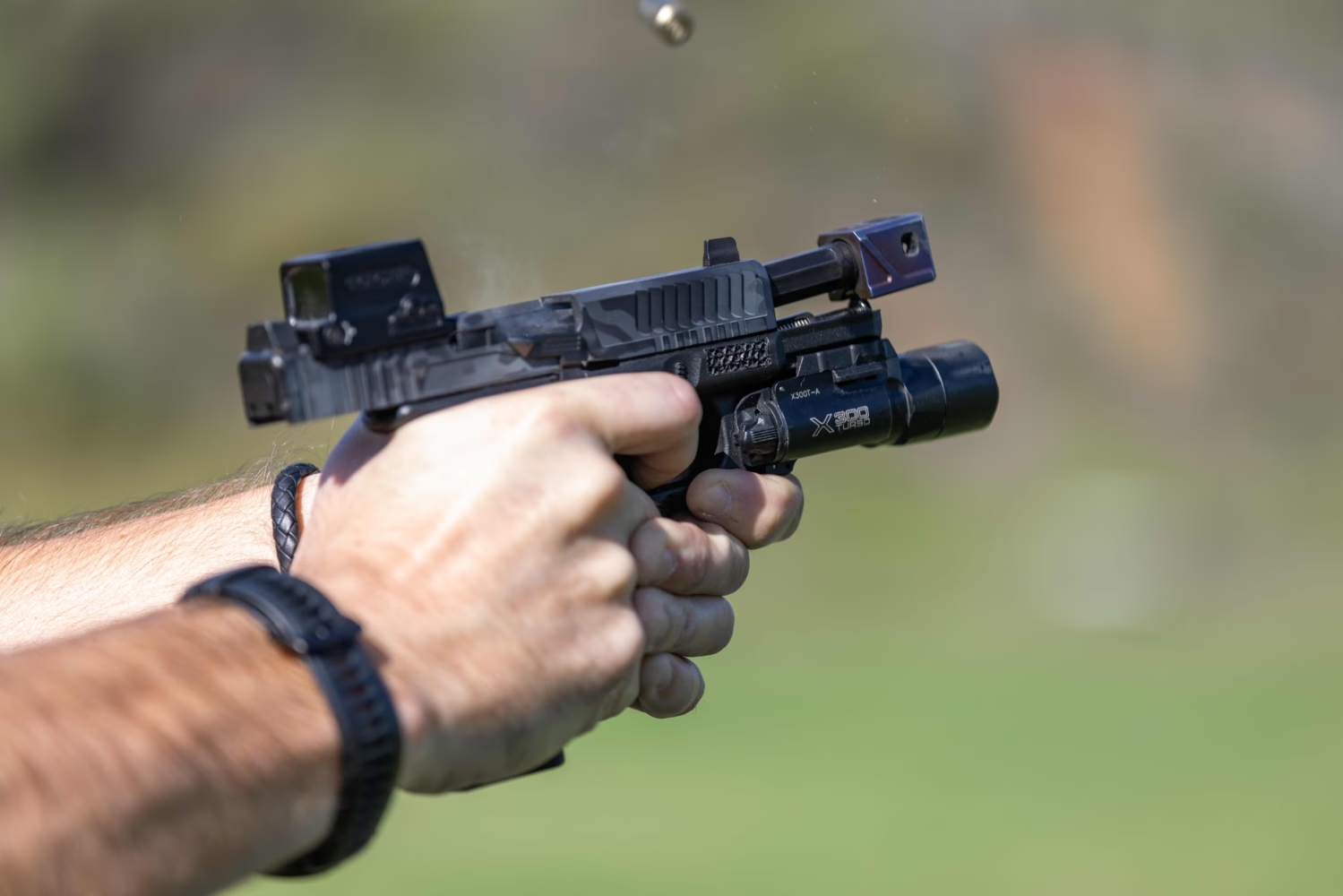
Choosing the Right Spring for Your Needs
When it comes to selecting the best recoil spring for your GLOCK, context is everything. For those who carry their pistol for personal protection, whether concealed or on duty, the safest choice is to stick with the factory-standard recoil spring assembly. GLOCK engineers have tested these springs extensively with defensive ammunition, ensuring that they provide the greatest balance of reliability and longevity under real-world conditions.
Competitive shooters, on the other hand, may find value in lighter recoil springs, particularly when combined with compensators or tuned handloads. These shooters prioritize speed and control over universal reliability, and a carefully selected lightweight spring can deliver the softer recoil and faster cycling needed for top performance on the clock.
Those who primarily train or operate with suppressors often prefer heavier recoil springs for the reasons mentioned above. However, this is entirely dependent on the user’s specific setup, as different suppressor, piston, and firearm combinations can all require distinct tuning.
Ultimately, the right recoil spring depends on how the pistol will be used, what accessories are attached, and what ammunition is most commonly fired. The key is to match the spring to the application without sacrificing reliability. For defensive use, reliability should always outweigh any potential benefit in recoil reduction or cycle speed. For competition, carefully tuned systems may lean more aggressively toward performance, but only after thorough testing confirms that the setup runs flawlessly.
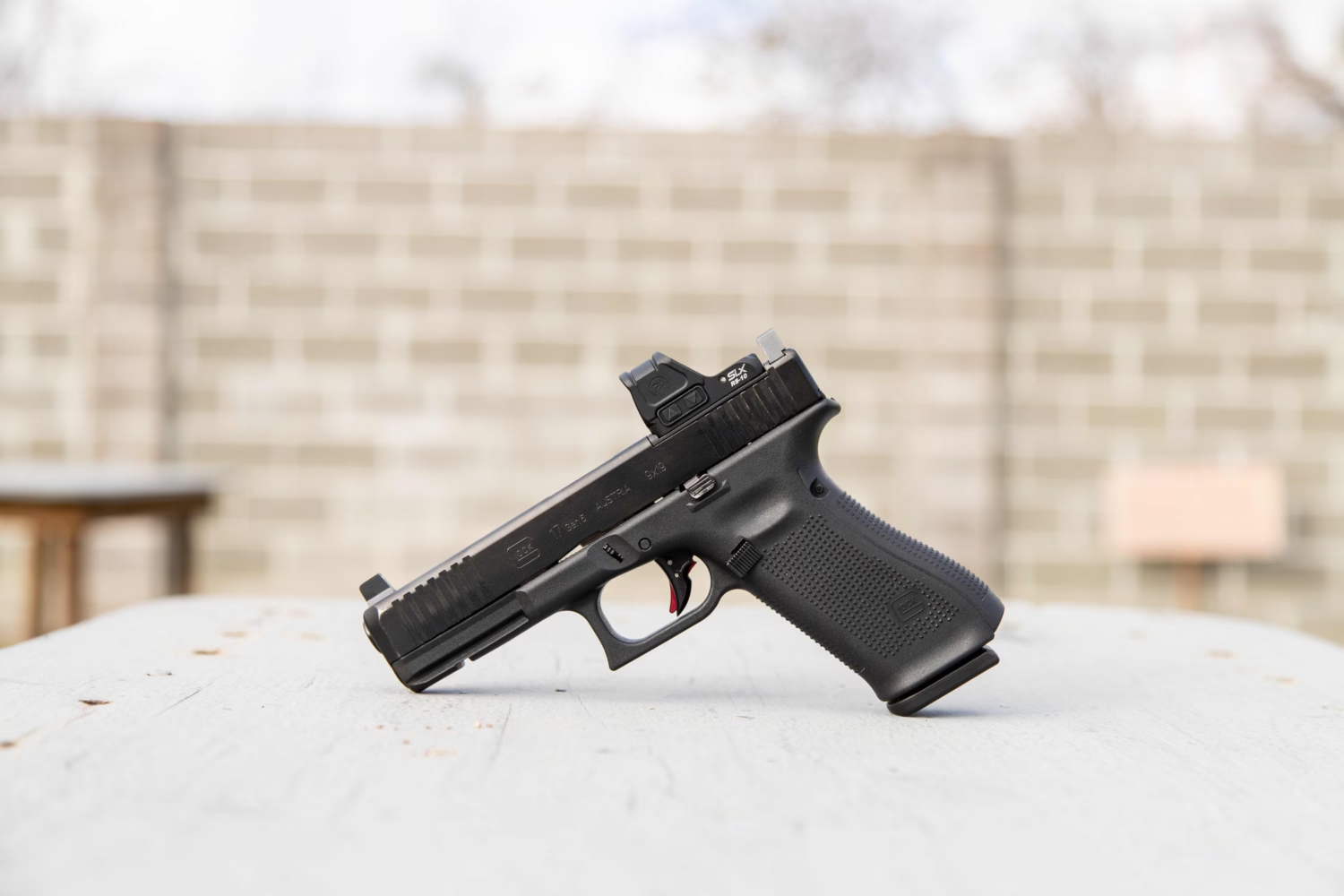
Conclusion
The recoil spring may be a small and often overlooked part of the GLOCK pistol, but its importance cannot be overstated. Acting as both a shock absorber and a timing mechanism, it ensures that the firearm cycles reliably and smoothly through every shot. By understanding how recoil springs function, what options are available, and how to troubleshoot common issues, GLOCK owners can take greater control of their firearm’s performance.
Whether sticking with a factory-standard assembly for duty use, experimenting with lighter springs for competitive advantage, or choosing heavier springs to tame suppressor-induced backpressure, the right choice of recoil spring and guide rod can transform the way a GLOCK feels and functions. Reliability should always be the first priority, but within that framework lies ample room for fine-tuning and customization.
In the end, the GLOCK’s reputation for adaptability is reflected in its recoil spring system. By mastering this simple yet vital component, shooters can ensure their pistol runs as reliably as intended while also tailoring its performance to meet their specific needs.
